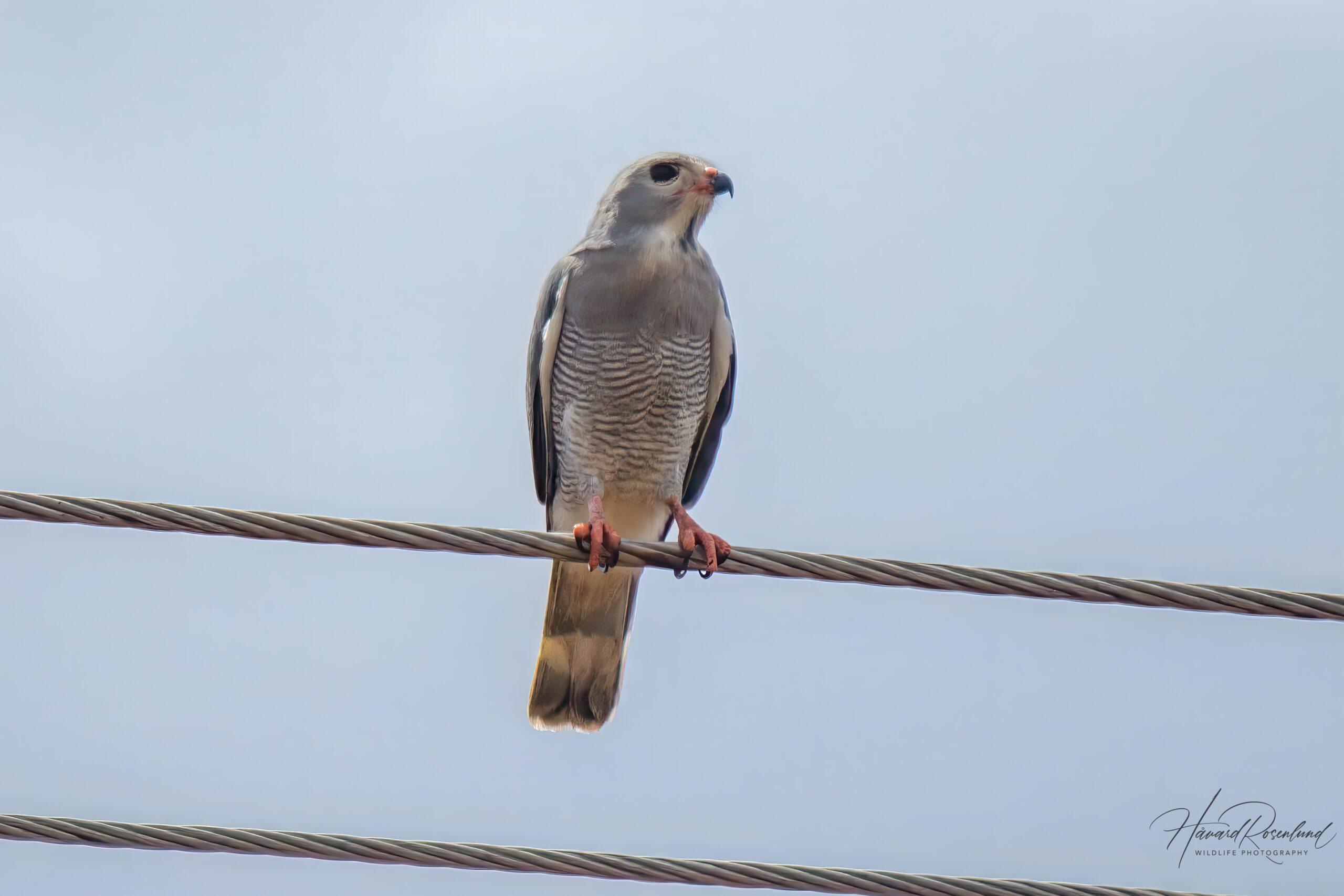Lizard Buzzard
(Kaupifalco monogrammicus)
Description
The lizard buzzard (Kaupifalco monogrammicus) is a distinctive bird of prey, found across much of sub-Saharan Africa. This smallish raptor typically measures about 30-37 cm (11.8-14.6 in) in length, with a wingspan ranging from 63-79 cm (24.8-31.1 in). Although it is called buzzard by name, this species is more closely related to hawks, particularly the chanting goshawks. It is characterized by a grey head and back, a white throat with a distinctive black throat band, and barred underparts. The tail is black with a white bar towards the end. It looks similar to the Gabar goshawk (Micronisus gabar), which is slightly smaller on average and has multiple narrower white bars on the tail, and to the chanting goshawks of the genus Melierax, which are much larger. None of these species have the black throat band, which is a telltale sign of the lizard buzzard.
Diet & habitat
The lizard buzzard predominantly inhabits woodland and forest edges, savannas, and bushveld regions. It is often seen perched conspicuously in open areas, scanning for prey. Its diet mainly consists of lizards, hence its name, but it also preys on small mammals, insects, and occasionally small birds. When it hunts, it usually drops onto its prey from a perch.
Nesting
The breeding season of the lizard buzzard varies geographically but typically occurs during the dry season. During courtship, the male performs aerial displays. They build their nests in trees, usually a simple platform of twigs. The female usually lays 1-2 eggs, which are incubated for about 30-35 days. Both parents take part in raising the young, which fledge approximately 5-6 weeks after hatching.
Status
The lizard buzzard is not considered threatened, primarily due to its wide range and stable population trends. However, like many raptors, it could be susceptible to habitat loss and degradation. It listed as least concern on the IUCN Red List.







